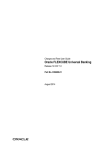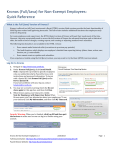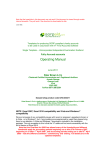Download Commission User Manual
Transcript
Commission Oracle FLEXCUBE Universal Banking Release 12.0 [May] [2012] Oracle Part Number E51465-01 Commission Table of Contents 1. ABOUT THIS MANUAL................................................................................................................................ 1-1 1.1 1.2 1.3 1.4 1.5 1.6 2. INTRODUCTION ........................................................................................................................................... 1-1 AUDIENCE .................................................................................................................................................. 1-1 ORGANIZATION .......................................................................................................................................... 1-1 CONVENTIONS USED IN THIS MANUAL ....................................................................................................... 1-1 GLOSSARY OF ICONS .................................................................................................................................. 1-1 RELATED DOCUMENTS ............................................................................................................................... 1-2 PROCESSING COMMISSION ..................................................................................................................... 2-3 2.1 INTRODUCTION ........................................................................................................................................... 2-3 2.2 DEFINING A COMMISSION RULE ................................................................................................................. 2-4 2.2.1 Creating Commission Rules ............................................................................................................... 2-4 2.2.2 Building the Commission Rule ........................................................................................................... 2-6 2.2.3 Sequence for Resolution of ICCF Rules ........................................................................................... 2-18 2.2.4 Copying an ICCF Rule .................................................................................................................... 2-19 2.3 LINKING A COMMISSION RULE TO A PRODUCT ......................................................................................... 2-20 2.4 COMMISSION DETAILS FOR A CONTRACT ................................................................................................. 2-24 3. COMMISSION CALCULATION ................................................................................................................. 3-1 3.1 INTRODUCTION ........................................................................................................................................... 3-1 3.2 CALCULATION PARAMETERS FOR RATE TYPE COMMISSION ...................................................................... 3-1 3.2.1 The Meaning of Rounding Period ...................................................................................................... 3-1 3.2.2 Applying the Rounding Period ........................................................................................................... 3-2 3.2.3 Commission calculation for an LC .................................................................................................... 3-2 3.3 COMMISSION COLLECTION ......................................................................................................................... 3-4 3.3.1 Periodic commissions ........................................................................................................................ 3-5 3.3.2 Non periodic commissions ................................................................................................................. 3-5 3.3.3 Commission collected in advance ...................................................................................................... 3-5 3.3.4 Commission collected in arrears ....................................................................................................... 3-5 3.3.5 Commission for LC amendment ......................................................................................................... 3-5 3.3.6 Non-periodic in advance .................................................................................................................. 3-14 3.3.7 Non-periodic in arrears ................................................................................................................... 3-15 3.4 PERIODIC COMMISSION CALCULATION..................................................................................................... 3-15 3.4.1 Commission calculation on opening an LC ..................................................................................... 3-15 3.4.2 Commission calculation on amending an LC .................................................................................. 3-17 3.5 COMMISSION STOP DATE AND COMMISSION CALCULATION .................................................................... 3-19 4. SCREEN GLOSSARY .................................................................................................................................... 4-1 4.1 FUNCTION ID LIST...................................................................................................................................... 4-1 1. 1.1 About this Manual Introduction This manual is intended as a guide to help you maintain and process all types of commissions that are applicable to a contract involving a product in Oracle FLEXCUBE. You can further obtain information specific to a particular field by placing the cursor on the relevant field and striking <F1> on the keyboard. 1.2 Audience This manual is intended for the officers who set up commission rules in Oracle FLEXCUBE. 1.3 Organization This manual is organized as follows: 1.4 Chapter 1 About this Manual gives information on the intended audience. It also lists the various chapters covered in this User Manual. Chapter 2 Processing Commissions explains how commissions can be set up and processed. It details the procedure involved in defining commission rules, linking the rules to products and applying them on a contract. Chapter 3 Commission Calculation describes the manner in which commission is calculated in a contract involving a product in Oracle FLEXCUBE. It contains detailed examples of the parameters that determine commission calculation and collection. Conventions Used in this Manual Important information is preceded with the 1.5 symbol. Glossary of Icons This User Manual may refer to all or some of the following icons. Icons Function Exit Add row Delete row Option List 1-1 1.6 Related Documents For further information on procedures discussed in the manual, refer to the Oracle FLEXCUBE manuals on: Common Procedures Products 1-2 2. 2.1 Processing Commission Introduction A Bank provides different facilities to Corporate customers. The facilities offered are issuance of Letters of Credit, Bank Guarantee, Collection of Bills etc. For rendering these facilities the Bank collects commission. Oracle FLEXCUBE supports issuance of Letters of Credit, Collection of Bills etc. Lines of business like trade finance and foreign exchange have a host of fees associated with them. For instance when a bank opens a letter of credit, it charges a commission which could be a percentage of the LC value for a period. Similarly, when a bank sends its exporter’s bill for collection it recovers a commission for processing the bill. It also recovers a collection charge when the bill amount is received from the importer’s bank (after it is paid by the importer). In foreign exchange transactions, a bank normally recovers commission for entering into a forward contract against a bill transaction. A bank also charges a premium for entering into a derivative transaction with a corporate customer. To process a contract, your bank may collect any or all of the following commissions: For issuing or advising a Letter of Credit (LC) For amending certain details of an issued or advised (LC) For issuing a shipping guarantee Commissions on a contract can be: Calculated as a percentage of the contract amount or as a flat amount Collected on a periodic or non-periodic basis Collected in advance or in arrears Accrued or not accrued Thus, there are different ways of collecting commission from your customers. Every time a contract is processed, you need not specify when and how the commission should be collected. Instead, you can define the attributes of a specific commission as a Commission Rule. A rule identifies the basic nature of the commission component. After the creation of a Commission Rule, proceed to create a Commission Class. The Commission Class is then attached to a Product. More than one type of commission can be applied on an event, in the lifecycle of a product. Example For a Letter of Credit (LC) you can apply two rules. One with 1/8th of 1% of the LC amount for three months, to be collected at the time you issue the LC; the other with a flat amount of say 200 local currency units. These will be processed as two different commission components. The income accounts can be different for these components. The two commission components will be reported in all reports and in the customer correspondence regarding the LC. In Oracle FLEXCUBE, you process commissions as follows: 2-3 Before a product module becomes operational, you should maintain certain basic information on commissions, which will later be linked to a product. To create this information, you will have to define commission rules. You will create Rule types for commissions with attributes suitable for the product where these rules will be applied. You give each commission rule a specific Rule ID. When you define a product, you can choose the required commission rules that are applicable for contracts in the product and link these rules to the product. The product will inherit the Rule ID’s that are linked in this manner. When you process a contract, the commission details defined for the product in which the contract has been entered would be applied automatically on the contract. In other words, the commission rule is ‘defaulted’ from the product under which the contract is processed. However, if required, you can change some of the attributes for a commission, for a specific contract. To process commission in Oracle FLEXCUBE, perform the following the in order given below: 1. Commission Rule Availability Maintenance - Branch Specific Rules 2. Commission Rule 3. Commission Class 4. Link to a Product 5. Link to the Contract 2.2 Defining a Commission Rule A commission rule uniquely identifies the basic nature of a commission component. Each commission rule is defined by an eight-character code, called a Rule ID. Attributes are defined for this Rule ID, which is then linked to a product. When a contract is processed, the commission attributes defined for the Rule ID linked to the product will be applied on the contract. You can define any number of rules for the commission that you would like to collect from your customers. 2.2.1 Creating Commission Rules A commission rule is created in the same way that any Interest, Commission, Charge and Fee (ICCF) rule is created, as follows: The rule is created at the head office branch, by giving it a unique identification and description, in the ICCF Rule Branch Availability screen. In this screen, the rule is made available for use in the required branches by maintaining an allowed / disallowed list of branches. At the required branch, in the ICCF Rule Details screen, the attributes for the rule are defined. Maintaining the attributes in this screen is subject to whether maintenance of ICCF rules is allowed for the branch, and also whether the rule, for which attributes are being defined, is allowed for the branch. To recall, at the head office of your branch, you can create appropriate ICCF rules and make the rules available to the required branches. 2-4 In the ‘ICCF Rule Availability Maintenance’ screen, you can maintain ICCF rules, which you can make available to desired branches. You can do this by maintaining a list of branches for which the use of the rule is allowed, or disallowed. You can invoke the ‘ICCF Rule Availability Maintenance’ screen by typing ‘CFDICCFR’ in the field at the top right corner of the Application tool bar and clicking the adjoining arrow button. In this screen, you must specify the following information: Rule Identification and Description You must specify a unique identification for the ICCF rule you are creating. If you are creating a commission rule, specify a unique identification for the commission rule. This is the identification that will be used as to identify for the rule, in all subsequent references to it. You must also specify a unique description for the rule. You must select the Rule ID to have all the bank branches listed in the Branch field list of options. After the rule has been created in the ‘ICCF Rule Branch Availability’ screen, the attributes for the rule must be defined in the ‘ICCF Rule Maintenance’ screen. 2-5 Branch Restrictions You can maintain a list of allowed branches (that is, the rule will be available for use in the allowed list of branches) or disallowed branches (the rule will not be available for use in the branches in the disallowed list). To recall, the attributes for the rule are defined, in the ‘ICCF Rule Maintenance’ screen. Maintaining the attributes in this screen, for a branch, is subject to whether maintenance of ICCF rules is allowed for the branch, and also whether the rule for which attributes are being defined, is allowed for the branch. For details about the Common Branch Restrictions, refer the Security Management System user manual. Example You have created the following Common Branch Restrictions: Home Branch Restriction Type Allowed Branches 000 ICCFRULE 000, 001, 002, 005 001 ICCFRULE 001, 006 The administrator of branch 000 can create, modify and delete ICCF rules in the branches 000, 001, 002 and 005, but not for 006. 2.2.2 Building the Commission Rule To recall, after a commission rule has been created in the ‘ICCF Rule Availability Maintenance’ screen, the attributes for the rule must be defined in the ‘ICCF Rule Maintenance’ screen. You can invoke this screen by typing ‘CFDRUMNT’ in the field at the top right corner of the Application tool bar and clicking the adjoining arrow button. 2-6 Building of commission rules is a part of the ICCF (Interest, Commissions, Charges and Fees) services that are used by all modules of Oracle FLEXCUBE. The following are the features of the ICCF rule details screen. Rule Type The Rule Type identifies the type of ICCF component you are defining. To define a commission rule, choose ‘Commission’ from the list. Rule ID and Description A Commission Rule identifies the basic nature of a commission component. Each Commission Rule is defined by an alphanumeric code called the Rule ID. Attributes are defined for this Rule ID, which is then linked to a product. When a contract is processed, the commission attributes defined for the Rule ID linked to the product will be applied on the contract. However, during contract processing you can change some of the defaulted attributes. 2-7 To recall, the Rule ID for a commission rule is specified in the ICCF Rule Branch Availability maintenance. Accordingly, in the Rule ID field in this screen, you must select the ID of the commission rule that you wish to build by maintaining the attributes. The option list in the Rule ID field is populated based on the following conditions: Only those Rule IDs that are available for users at the current branch according to the ICCF Rule Branch Availability maintenance are displayed The maintenance of ICCF rules must be allowed for users at the current branch, according to the restrictions maintained in the Common Branch Restrictions maintenance for the restriction type ICCFRULE. If no Common Branch Restrictions have been maintained, and the restriction type ICCFRULE has not been maintained in the SMS Branch Restriction Type maintenance, the option list in the Rule ID field only displays those rules that are available for users in the current branch, according to the ICCF Rule Branch Availability maintenance. 2.2.2.1 Commission Rule Application Conditions The conditions for the application of a commission rule can be defined in the ‘ICCF Rule Maintenance’ screen. The rule can be applied to any contract, irrespective of the currency of the contract, the customer and the branch involved. This is referred to as a general commission rule. You must define a general commission rule that would be applicable for any contracts in any currencies, involving any customers, customer groups or branches, before you define rules applicable to specific customers and contracts in specific currencies and in specific branches. The general rule can only be maintained at the head office branch. Thus, the most general application of the condition can be that it is applicable to contracts in any currency and involving any customer. After defining the general commission rule, you can then proceed to define rules that can be applied to contracts involving the following specific combinations: A specific branch, customer category, customer and currency A specific branch, customer category, customer and all currencies A specific branch, customer category, currency and all customers A specific branch, currency and all customer categories and customers A specific branch, customer categories and all currencies and customers A specific branch and all customer categories, customers and currencies A specific customer category, customer, currency, and all branches A specific customer category, customer and all currencies and branches A specific customer category, currency and all customers and branches A specific currency and all customer categories, customers and branches A specific customer category and all customers, currencies and branches All branches, customer categories, customers and currencies As mentioned earlier, the rules applicable for combinations involving all branches (the ALL option in the Branch Code field) can be maintained only from the head office branch. 2-8 Once a Commission Rule has been defined, you should link it to a product. Thus, the definition of Commission Rules should precede the definition of the product. Transaction Currency If you wish to define the attributes for all currencies, you can select the ALL option in the Currency Code field to indicate this. If you are maintaining the attributes for the selected ICCF rule in specific currency other than the ‘ALL’, select the Transaction Currency on which the rule mapping maintenance is to be made applicable. Customer Group Select the customer group on which the rule mapping maintenance is to be made applicable. You can create a generalized charge rule mapping record by selecting the ALL option in the Customer Group field. This specification is defaulted to the Customer and Customer Account fields. You will not be allowed to change the specification. Customer Identify the customer ID (CIF) of the customer for whom you are maintaining the rule mapping. Branch Code If you are maintaining the attributes for the selected ICCF rule from the head office branch, you can select the branch for which the attributes are being defined. If you wish to define the attributes for all branches, you can select the ALL option in the Branch Code field to indicate this. If you are maintaining the attributes for the selected ICCF rule from a branch other than the head office, you can only select those branches that are found in the allowed list of branches for: the ICCF rule definition Restriction Type (ICCFRULE), in the Common Branch Restrictions maintenance for the current branch the selected rule being built, according to the ICCF Rule Availability maintenance In other words, the option list in the Branch Code field would display only those branches that are allowed both for the rule and the current branch. The following example illustrates how the option lists in the Rule ID and Branch Code fields are populated: 2-9 Example You have created the following Common Branch Restrictions for the restriction type ICCFRULE: Home Branch Allowed Branches 000 000, 001, 002, 005 001 001, 006 002 002, 005, 006 005 002, 005, 006 You have maintained the following rules in the ICCF Rule Branch Availability Maintenance: RULE ID Allowed Branches COMRULE1 000, 001, 002, 005, 006 COMRULE2 001, 005, 006 COMRULE3 002, 005,006 In the ICCF Rule Details screen, the following options would result if the maintenance were as mentioned above: Branch Rule ID field option list Branch Code option list 000 COMRULE1 000, 001, 002, 005 001 COMRULE1, COMRULE2 001, 006 002 COMRULE1, COMRULE3 002, 005, 006 005 COMRULE1, COMRULE2, COMRULE3 002, 005, 006 (for COMRULE1), 005, 006 (for COMRULE2) or 002, 005, 006 (for COMRULE3) If no Common Branch Restrictions were maintained, and the restriction type ‘ICCFRULE’ were not maintained in the SMS Branch Restriction Type maintenance, the options in the ‘ICCF Rule Maintenance’ screen would be as follows: Branch Rule ID field option list Branch Code option list 000 COMRULE1 000, 001, 002, 005, 006 001 COMRULE1, COMRULE2 000, 001, 002, 005, 006 (for COMRULE1) or 001, 005, 006 (for COMRULE2) 002 COMRULE1, COMRULE3 000, 001, 002, 005, 006 (for COMRULE1) or 002, 005, 006 (for COMRULE3) 005 COMRULE1, COMRULE2, COMRULE3 000, 001, 002, 005, 006 (for COMRULE1), 001, 005, 006 (for COMRULE2) or 002, 005, 2-10 Branch Rule ID field option list Branch Code option list 006 (for COMRULE3) Rate type The commission that is applicable for a contract can be expressed either as a flat amount or a percentage of the Basis Amount. This in fact, forms the basic attribute of a commission rule. If you express the commission as a flat amount, you should also specify the currency in which the amount is expressed. The specific rates or amounts applicable as per the rule being defined can be specified subsequently. These rates or amounts can be changed while processing a contract. 2.2.2.2 Commission as a rate Fixed Rate The Fixed Rate will be applied on the Basis Amount of the contract. The basis amount is defined while linking the commission rule to the product. Example For a LC, the Basis Amount is the maximum LC amount (LC amount together with the positive tolerance). The fixed rate will be applied on this amount. 2.2.2.3 Maximum Commission Amount The Maximum Commission Amount for a commission refers to the maximum amount that can be applied on a contract involving this Rule ID. If the commission calculated for a contract using this Rule ID exceeds this amount, the Maximum Commission Amount that you specify, will be applied instead of the amount calculated using the fixed rate. Thus, you can fix the maximum amount that can be charged on a contract that your bank processes. Please note that you can indicate the Maximum and Minimum Commission Amounts only if the Rate Type is ‘Fixed Rate’. You cannot indicate these in case of a ‘Flat’ Rate. Example The commission applicable on an import LC is 0.05% per annum of the LC amount. The maximum commission that can be applied is USD $900. Your customer, Mr. Silas Reed, has requested an LC for USD $2,000,000 for a year. The commission amount in this case works out to be USD 1000 at 0.05%. As the commission amount calculated using the fixed rate, exceeds the maximum commission amount that you have specified, USD 900, will be collected from Mr. Reed as commission. 2.2.2.4 Minimum Commission Amount The Minimum Commission Amount for a commission refers to the Minimum amount that can be applied on a contract involving this Rule ID. If the commission calculated for a contract using a Commission Rule falls below this amount, the Minimum Commission Amount specified will be applied instead of the amount calculated using the fixed rate. Thus, you can fix the minimum amount that can be charged on a contract processes by your bank. Example The commission applicable on an import LC is 0.05% of the LC amount per annum. The minimum commission that can be applied is USD $10. Suppose your customer, Mr. Silas Reed, has requested an LC for USD 18,000. The commission calculated amounts to USD $9 at 0.05%. As the commission amount calculated using the fixed rate falls below the minimum CCF amount specified, USD $10 is what will be collected from Mr. Reed as the commission. 2-11 Minimum and Maximum rates If you have chosen not to maintain the minimum and maximum amounts, you can specify the minimum and maximum rates for commission calculations. If the brokerage calculated using this Rule ID exceeds the amount calculated using the maximum rate specified here, the maximum rate amount will be applied as commission. Similarly, if the commission amount falls below the amount calculated using the minimum rate, the minimum rate amount will be considered as commission. If you have specified a flat amount as the Rule Type, then you need not specify the minimum and maximum amount/rate limits. Defining an amount structure for commission application You can define the commission to be applied on the Basis Amount of a contract with a specific tier or slab structure. Rounding Period The Rounding Period indicates the period up to which, you would like to round off commission calculation. Fractional periods, during the tenor of a contract are rounded up to the nearest whole period based on the Rounding Period that you maintain. The Good Until Date is calculated using the tenor of the contract and the Rounding Period. The good until date is the date (after rounding) up to which the commission will be applied. Specification of Rate Period and Rounding Period is mandatory, for a tenor based commission. When the Rounding Period is Zero, the tenor is in days. When the rounding period is not zero, tenor is in months. Example For a LC, you define the period of rounding to be two months. Let the start date of the LC be 12 January 1998 and the expiry date of the LC be 15 June, 1998. The rate period has been specified as two months. In this case, the period for the purpose of commission calculation is: Actual period = 5 months and 4 days After Rounding = 6 months Thus, even though the actual commission period spans five months and four days, commission will be applied for six months. Tenor Basis You should specify whether the Commission Rule you are defining is to be applied based on the tenor of the contract. The tenor of the contract is calculated as the difference between the Maturity Date and the Value Date of the contract. After the tenor is calculated, brokerage will be computed based on the tenor slabs defined in the ‘Tenor Based Rates’ section of the screen. 2-12 2.2.2.5 Interest Basis Tiered Amount By choosing the Tiered Amount option, you can indicate if the Basis Amount on which commission is calculated for the rule is a tier or a slab. Check the ‘Tiered Amount’ box if the Basis Amount structure is a tier. If a slab, do not choose this option. You can indicate that commission should be calculated on a tier basis only in the case of non-periodic commissions. The following example illustrates how such a definition can be made: Example You have the following Basis Amount structure for a Rule ID, defined for a commission on a product: Amount Rate per annum 0 to 250 thousand 5% > 250 thousand <= 1 Million 6% > 1 Million <= 3 Million 7% > 3 Million 8% When this Rule ID is applied on a Basis Amount of USD 1.5 million, the rate of commission will be calculated depending on whether the Basis Amount has been defined as Slab or Tier. It is calculated as follows: Cumulative (Tier) basis The first 250,000 will be charged at 5% Amount from 250,001 to 1,000,000 at 6% Amount from 1,000,001 to 1,500,000 at 7% The total amount charged as commission will be USD 92,500 Non-cumulative (Slab) basis The entire USD $1.5 million will be charged at 7% The amount charged will be USD 105,000 These however will be subject to the maximum and Minimum CCF amount specified for the rule. Floor CCF Amount For a tier structure, you can specify the Floor CCF Amount. This is specific to commission rule. Floor CCF Amount indicates the minimum amount for the slab. This is used if the computation basis is 'Tiered'. Floor CCF Amount is the commission amount to be considered for the previous slab limit. This amount is used along with Floor Basis Amount to arrive at the commission for an amount falling in the current slab. This amount need not be the same as the amount calculated using the Basis Amount and rate for the previous slab. An example for the calculation of commissions based on a tier structure For issuing LCs at your bank, the charges are applied based on the following structure: > 0 <= 10,000 - 0.05% > 10,000 <= 20,000 - 0.06% > 20,000 - 0.08% 2-13 The following will be the specifications in the ICCF Rule Details screen: Basis Amount Fixed Rate Floor Basis Amount Floor CCF Amount 10000 (upper limit of the first tier) 0.05 0 0 20000 0.06 10000 (upper limit of the first tier) X (charge amount that will be considered for the first tier) 999999999 (a big amount since there is no upper limit for the third slab) 0.08 20000 (upper limit of the second tier) Y (charge amount that will be considered for the earlier slabs) This Rule ID is linked to a import LC through the Product for Import LCs. The calculation of commissions will be as follows, depending on the LC amount: If the LC amount is USD 5000, it falls in the first tier. The commission amount will be calculated in the following manner: LC Amount = USD 5000 Commission Amount 0.05% of USD 5000 = 2.5 If the LC amount is USD 15000, it falls in the second tier. The commission amount will be calculated in the following manner: LC Amount = USD 15000 Floor Charge (X)=5 Amount to be charged at 0.06% = USD 5000 (LC Amount - the floor amount of the second tier) Commission Amount = USD 3+5 = USD 8 If the LC amount is USD 30000, it falls in the third slab. The commission amount will be calculated in the following manner: LC Amount = USD 30000 Floor Charge (Y) =11 Amount to be charged at 0.08% = USD 10000 (LC Amount - the floor amount for the second tier) Charge Amount = USD 8+11= USD 19 As per Contract Currency This specifies the calculation basis for the commission based on the Contract Currency or Rule Currency. Check this box if you wish to calculate the commission based on the contract currency. Tiered Tenor You can indicate that commission is to be calculated on the basis of a tiered tenor structure, by choosing the Tiered Tenor option. If the rule should calculate commission on the basis of a slab structure, leave the check box adjacent to Tiered Tenor unchecked. 2-14 2.2.2.6 Rate You can choose to indicate the Rate Code and whether the rate is Mid, Buy or Sell only when the basis amount currency and the rate currency is different from the contract currency. The rate code is used to arrive at the exchange rate if the rate currency is different from the contract currency. The system arrives at the exchange rate from the parameters specified for the currency pair in the Currency Pair Definition table. Refer to the chapter on ‘Currency Maintenance’ in the ‘Core Services’ User Manual for more information on parameters of currency pairs. Cascade Amount and Basis Amount You can opt to ‘cascade’ commission on contracts whose amount has been amended. Commission calculation can either be solely for the amended Basis Amount, or the entire Basis Amount of the contract (the amended Basis Amount plus the original Basis Amount of the contract). Choosing to calculate commission only for the amended Basis Amount of the contract is referred to as ‘Cascading’. Commission that you collect for the amended amount can be calculated on the basis of a tier or a slab structure. Example An LC is issued for USD 100000. The commission is also collected. After a month, the LC amount is increased by USD 50000, i.e. the total LC amount is USD 150000. If you check the box against 'CASCADE' the commission will be collected for USD 50000 only. If you uncheck this box, the commission will be collected for USD 150000. Charge Currency The charge currency is the currency, which associates with the commission which is calculated or the flat commission amount. When building a commission rule, if the Rate Type is a Flat Amount, you have to indicate the currency of the commission. The commission when applied on a transaction will be collected in this currency. The input to this field can be any currency that is maintained as part of Currency Definition in Oracle FLEXCUBE. Rate Period The rate period is used to define the period for which, the fixed commission rate is applicable. Instead of expressing the commission rate on a per annum basis, you should specify it on a rate period basis, which is expressed in months. Example 0.5% for 3 months = 2% per annum and 1% for six months If the commission is periodic, then the rate period is used to define the period for which the fixed commission rate is applicable as well as the commission liquidation frequency. Example The commission needs to be charged on a per annum basis and commission liquidation frequency is quarterly. The rate of commission is 12% per annum and the liquidation frequency is quarterly. Commission rate per month = 12% No. of Quarters per year = 4 Commission rate per quarter = 3 2-15 Input the value as 3 in the Rate Period field Bracket Amount You can create a Charge Rule that would calculate charges on the basis of an amount structure. In this table you define the different attributes of amount structure based on which the charges would be calculated. Basis Amount To You should specify the upper limit of the slab or tier to which a particular rate or amount should be applied as commission. Example You have defined the following Tier or slab structure: Amount Rate 0 to 250 thousand 5% > 250 thousand <= 1 Million 6% > 1 Million <= 3 Million 7% > 3 Million 8% The Basis Amount To for the first slab or tier should be indicated as 250,000 that for the second slab or tier as 1,000,000, and so on. 2.2.2.7 Commission as a Flat Amount Defining the commission as a flat amount involves the specification of the following: The flat amount (called the CCF amount for commission, charges of fees) The currency in which the amount is expressed (specified in the Charge Ccy field) Flat Commission Amount If the commission is expressed in the form of a flat amount, you should specify the amount to be collected as commission. Flat Amount Currency If the Rate Type is expressed as a Flat Amount, you should also specify the currency in which the amount has to be applied. If it is not the same as the currency of the account from which the commission is paid, the amount will be converted at the rate specified for the product. This rate, as well as the amount defaulted, can be changed while processing the contract involving the rule. You can specify the currency of the flat amount in the Charge Currency (Ccy) field. 2.2.2.8 Tenor-Based Commission Oracle FLEXCUBE allows you to compute tenor-based commission on a product. You can specify the details required to calculate tenor-based commission in the ICCF Rule Details screen. 2-16 Minimum Commission Period If you indicate the Rate Type, of a commission rule as Fixed Rate, you should also specify the Minimum Commission Period for the rule. The commission defined for the minimum commission period will be applied on contracts with tenors less than the minimum period. If the tenor of a contract is greater than the minimum commission period, commission will be calculated using the amount and tier structures that you build in this screen. Example An LC is issued for USD 100000 for one month. The minimum Commission Period is 3 months. The commission is collected for 3 months. Calculating Commission using a Tenor-Based Tier/Slab Structure You can define a tenor-based tier or slab structure for every amount slab that you have built. The following example illustrates how commission is calculated using a tenor-based structure. Example Your Requirement You are building a Commission Rule (Rule ID: Tenor Tier) that you would like to associate with a product. You would like to compute commission for the contracts maintained under the product on the following tiered tenor basis: Basis Amount Tenor One Tenor Two Tenor Three (Slab) (0-3 months) (4-6 months) (7-999 months) 0 - 100,000 0.1% 0.15% 0.17% 100,001 - 1,000,000 0.2% 0.25% 0.3% 1,000,001 - 99,000,000 0.5% 0.75% 1% Please note that the commission rates are specified in terms of a per month basis (specified in the Rate Period field as 1.) Building the Commission Rule The Rule you are building calculates commission on the basis of a rate. In the Rate Type field, select the ‘Fixed Rate’ option. In Min. Comm. Period, specify the minimum commission period as, say, 1. Since you would like to calculate commission on the basis of a tiered tenor structure, click on the check box adjacent to Tiered Tenor. In Basis Amount To, enter the upper limits of the different slabs. That is, enter 100,000; 1,000,000; and 99,000,000. In the Tenor Based Rates field, you can build the tiered tenors for each amount slab, in the following manner: For the first amount slab, enter the tenor-based tier structure in the Tenor Based Rates fields. In this case, choose the first amount slab, 100,000 in the Basis Amount field. For the first amount slab, enter the lower and upper limits of the tenor-based tiers in the ‘Tenor From’ and ‘Tenor To’ columns respectively. In this case, for the first tenor-based tier, enter the 0 as Tenor From, and 3 as Tenor To. For each tenor-based tier, provide the corresponding rate in the Fixed Rate column. For the tenor 0-3 months, enter 0.1 in the Fixed Rate column. In a similar manner, build the tenor structure for the other amount slabs. 2-17 Only some fields are mentioned in this example. When building a commission rule, you have to specify other details such as the Commission Currency, the Basis Amount Currency, etc. When the rule is applied on a contract Assume that this rule (Tenor Tier) is linked to a product. Commission for the contracts maintained under this product, will be calculated using the rule ‘Tenor Tier’. The commission for the following contract is calculated using this rule: Basis Amount = 800,000 Tenor = 8 months The Basis Amount falls in the second slab (greater than 100,000, upto 1,000,000). The tiered tenors, corresponding to the second amount slab, will be used to arrive at the commission amount. The commission amount will be calculated in the following manner: Commission Amount for the period 0 to 3 months: 800,000 * 3 * 0.2% = 4800 Commission Amount for the period 4 to 6 months: 800,000 * 3 * 0.25% = 6000 Commission Amount for the period 7 to 8 months: 800,000 * 2 * 0.3 = 4800 Total commission calculated for the contract using Rule Tenor Tier = 15600 In the Contract ICCF screen, the rate applied on the last tier (in the example, 0.3%) will be displayed. You cannot modify the Rate, the Collection Method and the Rounding Period during contract input. 2.2.3 Sequence for Resolution of ICCF Rules ICCF Rules that you maintain are resolved in the following sequence: Rule Branch Customer Category Customer Currency Specific Specific Specific Specific Specific Specific Specific Specific Specific ALL Specific Specific Specific ALL Specific Specific Specific ALL ALL Specific Specific Specific Specific ALL ALL Specific Specific ALL ALL ALL Specific ALL Specific Specific Specific Specific ALL Specific Specific ALL Specific ALL Specific ALL Specific 2-18 Rule Branch Customer Category Customer Currency Specific ALL ALL ALL Specific Specific ALL Specific ALL ALL Specific ALL ALL ALL ALL 2.2.4 Copying an ICCF Rule In order to make the definition of ICCF rules easier, you can copy an existing rule and modify its attributes. You can do this through the ‘ICCF Rule Copy’ screen. To invoke this screen, select an existing record and click copy icon or select ‘Copy’ from the Actions menu in the Application toolbar. In this screen, you must indicate the combination for your search. The options are: Rule Identification Transaction Currency Customer Group Customer Branch Code A list of all rules defined for the combination you have specified is displayed. You can select the appropriate rule. 2-19 2.3 Linking a Commission Rule to a Product After defining the attributes of a commission by allotting it a Rule ID and specifying the application conditions, you can link it to a product. When a contract is processed involving the product, the commission attributes defined for the product will be applied. Some of these attributes can be changed while processing the contract. If an attribute can be changed, it will be mentioned in the on-line help for the field. To invoke the ‘ICCF Details’ screen, you need to click ‘Commission’ button from the ‘Product Definition’ screen. Through this screen you can make a commission rule that you have defined applicable to a product. Enter the following details in the ICCF screen. Product Component Rule Identification 2-20 A commission is applicable for a specific event in the lifecycle of a contract involving the product. You can have different types of commissions for issue and amendment of a contract. You can also have more than one commission applicable for a single event of the contract. While processing a contract involving the product, all these rules can be retained or one or more can be waived. The commission rules you define for a product must either be periodic or non-periodic in nature. You cannot have a mix of periodic and non-periodic commission rules linked to a product. 2.3.1.1 Event Associating a Commission Rule For a commission component, you should specify the event during, which the commission component whose attributes are being defined, has to be applied. Example For a LC, the events could be at: Issue of an import LC or a guarantee (Event Code BISS). Advice of an export LC (Event Code BADV). Pre-advice of an export LC (Event Code BPRE). Advice and confirm an export LC (Event Code BANC). Amendment of any LC (Event Code AMND). 2.3.1.2 Basis for Application To specify the basis for the application of the commission, you need to specify the following attributes: Amount Type If the rate type specified for the commission component is a fixed rate, specify the basis amount on which the commission should be applied. Example For a LC, the commission rule can be applied on the Outstanding LC Amount. Category If the rate type specified for the commission component is fixed, specify the type of Basis Amount that has to be considered for commission calculation. The category can be one of the following: Expected Overdue Normal Outstanding Example For of a LC, as the balance on which a commission is applied will always be the outstanding balance, the basis amount category for an LC is normal. 2-21 Accruals The commission on a contract can be accrued over a period. You can accrue some or all of the commissions defined. The frequency of the accruals has to be specified, as part of product preferences. All the components that have to be accrued will thus be accrued at the same frequency. The accruals will be carried out at the specified frequency, by the batch-processing program for the product, during End of Cycle processing. Note the following In case of periodic commission, accrual with monthly frequency happens on the month end; that is on the last working day of the month The system accrues commission at the end of commission collection period Whenever there is an auto CLIQ (Commission Liquidation) event, the system accrues commission (Catch-up accrual) for that particular day For a Letters of Credit contract, in case of periodic commission, the system accrues commission till the end of the month on the last working day of the month if: the ‘Accrual Required’ field is checked the accrual frequency is monthly the last calendar days of month are marked as holidays for the branch (Local Holidays) 2.3.1.3 Commission Currency This is the currency in which commission will be applicable. The option list will display all the currencies available at your bank. Calculation Basis Here, you can specify the basis for calculating commission on the given currency. The options available are: 30(Euro)/360 30(US)/360 Actual/360 30(Euro)/365 30(US)/365 Actual/365 30(Euro)/Actual 30(US)/Actual Actual/Actual The above fields are not mandatory at the product level. If not specified, the system picks up the interest basis defined for the currency and uses that to calculate commission. These fields can be changed anytime at the product level because the existing contracts will use the old commission basis. During copy operation, all the commission calculation basis parameters existing for the product needs to be copied to new product. 2-22 Stop Application The attributes defined for a product will be automatically applied to all new contracts involving the product. However, you have an option to stop the application of a commission on new contracts involving the product. This can be achieved by ticking the Stop Application button for the component in the ICCF Rule Details screen. However, please note that the existing contracts will continue to have the commission rule applied on them. If the rule is used as a periodic commission, you can stop its application for existing contracts, by specifying a Stop Date in the Contract ICCF screen. At any time, you can revoke the commission rule and reapply it for new contracts by un-checking the Stop Application button. The commission details defined for a product will be automatically applied on a contract involving the product. However, you can change certain attributes of a commission, for a specific contract. Some products may need more information on commission processing, which are specific to the product. These inputs are entered in the Product Preferences screen. Refer to the product module user manual for an explanation of product preferences. Note that you will not be able to save ICCF commission details for an LC product of the type ‘Reimbursement’. The system will display an error message while saving the ICCF commission details. 2.3.1.4 LIFO/FIFO Rule For a product you can specify the method for computing the commission for the customer. The two options available to you are as follows: LIFO FIFO LIFO Select LIFO if the commission has to be computed using the LIFO method. Here the basis amount of commission components is reduced in the Last In First Out (LIFO) order, whenever the LC contract is availed or the outstanding amount of the LC is reduced. FIFO Select FIFO if you want to calculate your commission using the FIFO method. Here the basis amount of commission components is reduced in First In First Out (FIFO) order, whenever the LC contract is availed or the outstanding amount of the LC is reduced. Example Illustrating FIFO and LIFO: On 01.01.2007 LC of 50,000 is Opened for a validity 2 months Commission rate is 0.125% and Minimum Commission period is 3 months Commission calculated is 50000*.125% for 3 months (01.01.2007 – 31.03.2007) Good until date is 31.03.2007 LC expiry date is 28.02.2007 On 01.02.2007 2-23 LC Amendment - Increase in amount by 40,000, so total LC is 90,000 Commission calculated would be 40000*0.125% for 3 months Good until date is 30.04.2007 On 20.02.2007 LC is availed - 30,000 On 01.02.2007 Expiry date of the LC is amended to 15.04.2007 With the above details, FIFO process Basis Amount Calculation would be: (Org LC 50000-availed30000) = 20000 20000*0.125% for 3 m = 75 With the above details, LIFO process Basis Amount Calculation would be 2.4 (Amended LC amount 40000- availed 30000) = 10000 No commission to be charged Original LC is 50000 50000*0.125% for 3 m = 187.50 Commission Details for a Contract The commission details defined for a product will be automatically applied on a contract involving the product. These details can be viewed through the ‘Commission Details’ screen. You can also change certain attributes of a commission, for a specific contract. From the Contract screen, click ‘Commission’ button for a display of the ‘Commission Details’ screen. The details of the commission applicable for the event you are processing will be shown. The following attributes can be changed for a commission component. The rate, if the commission is expressed as a rate The amount if the commission is expressed as a flat amount The collection period for a periodic commission The collection method - arrears or advance 2-24 Use the set of arrow buttons to move between the next, previous that has been linked. Contract Ref No The contract reference number, of the contract you are processing, will be displayed on this screen. The details of this screen can be divided into two sections. The first contains and captures details of the commissions that are to be processed on the contract. The second contains details of the charges to be levied on the contract. Event and Component The commission component and the event for which the component is to be applied, along with their description, are defaulted from the product under which the contract is processed. Based on the details you have specified for the rule and the product that a contract involves, the following details will be defaulted. Some of these attributes can be changed. Calculation Method The commission calculation method, i.e., whether it is collected on a periodic or non-periodic basis, is defaulted from the product. Rate If you have specified the commission as a rate, the following details will be defaulted. These default settings can be changed. The fixed rate defined for the rule The period (in months) for which the fixed rate is applicable For a periodic commission, you can specify whether the rate should be applied from the current period or from the next period. 2-25 Start and End date By default, the period for commission application will be between the Issue Date and the Good Until Date. However, you can change this period by specifying a Start Date and End Date for commission calculation. Good Until Date (GUD) The Good Until Date is calculated, based on the Expiry Date and the Rounding Period, for commission calculation. The GUD is the date (after rounding) up to which the commission will be applied. Example An LC is issued for USD 10000 for 4 months. Minimum commission period is 3 months and the rounding period is 2 months. The fourth month has to be rounded to two months, which will aggregate to 6 months. The commission is collected for 6 months. Even though the LC is issued for 4 months the commission collected holds good for 6 months. If the customer enhances the expiry date totaling up to six months during the course of the LC, the commission will not be collected, since the commission is already collected at the time of issuance. Commission Calculation Basis This will specify the calculation basis for the commission. This field is applicable only for commission components whose rounding rule = 0.The drop down list will have the following commission calculation values you can opt from: 30(Euro)/360 30(US)/360 Actual/360 30(Euro)/365 30(US)/365 Actual/365 30(Euro)/Actual 30(US)/Actual Actual/Actual The Calculation basis field will be defaulted from the product based on the commission currency. If the details are not present in the product, the interest method defined for the currency will be displayed. For commission components whose rounding period is non-zero and for flat calculation method, the calculation basis will be actual/actual and the field will be disabled. This field can be changed only for components whose rounding period is zero. The value of this field can be changed at the contract level during contract input. Subsequently this value cannot be changed during amendment or other events. The commission calculation basis field is a mandatory field at contract input though it is not mandatory at product level. During copy operation the commission calculation basis needs to be picked from the product. If it is not present, then the same would be picked from the currency definition. The commission calculation process will obtain the commission calculation basis from the contract commission details and accordingly pick up the number of days for commission calculation. Example Commission calculation till Expiry date Date of issue 01-Jan-2009 2-26 Date of expiry 01-Jul-2009 Amount USD 10,000 Commission rate 5% p.a Include to date (Yes): Commission calculation basis: Actual/Actual Tenor in days = (01-Jul-2009 – 01-Jan-2009) =30+31+30+31+28+31=181 Tenor in days =181+1(Include to date) =182 Total number of days =365 Commission amount = (10,000*5*182)/(365*100)= 249.31 Include to date (No): Commission calculation basis: Actual/Actual Tenor in days = (01-Jul-2009 – 01-Jan-2009) =30+31+30+31+28+31=181 Tenor in days =181(Exclude to date) Commission amount = (10,000*5*181)/(365*100)= 247.94 Include to date (Yes): Commission calculation basis: Actual/360 Tenor in days = (01-Jul-2009 – 01-Jan-2009) =30+31+30+31+28+31=181 Tenor in days =181+1(Include to date) =182 Total number of days =360 Commission amount = (10,000*5*182)/ (360*100) = 252.78 Include to date (No): Commission calculation basis: Actual/360 Tenor in days = (01-Jul-2009 – 01-Jan-2009) = 30+31+30+31+28+31=181 Tenor in days =181(Exclude to date) Commission amount = (10,000*5*181)/ (360*100) = 251.39 Commission Amount Acquired Amount Payment type The commission type specifies whether the commission should be collected in arrears or in advance. Follow Rule For a specific commission, you have the option to change certain details while processing a contract. If, after changing some details you decide to reapply the ones defaulted from the product, tick the Follow rule button. This button is basically an Undo action of the changes you made. 2-27 Waive The application of a specific commission can be waived for a contract. This can be achieved by ticking the Waive button before the commission is collected. To waive all the commissions applicable for an event by checking against the Waive all field. Details of a Flat Commission If for the rule, you have specified that the commission component is to be collected as a flat amount, the following details will be defaulted: The flat amount defined as the commission amount The currency in which the flat amount is to be collected 2-28 3. 3.1 Commission Calculation Introduction The process of defining parameters that determine the method of commission calculation and collection for a contract is spread over the following four screens: The Rule Definition screen The Product ICCF screen The Product Preferences screen The Contract ICCF screen For details regarding the definition of commission rules and their application on a contract, refer the chapter on processing commissions in this Commissions User Manual. This chapter explains the manner in which the various commission parameters affect its calculation. As commissions are applied most frequently on Letter of Credit (LC) contracts, the following discussion and examples will assume that we are dealing with a LC contract. However, the methods are applicable to other types of contracts as well. The methods of commission calculation and commission collection are discussed in the following sections. 3.2 Calculation Parameters for Rate Type Commission Commission can be defined as a flat amount or it can be expressed in terms of a rate. A commission rule defines the basic attributes of a commission. The procedure for defining commission rules is described under Processing Commissions. The following commission calculation parameters, are defined for a commission rule: The rounding period The rate period These rules are then linked to a product. For instance, you process an LC contract under a product, all the parameters defined for the rule linked to the product, will be applicable to the LC. Some of these parameters can be changed, when an LC is processed. The calculation of commission will be based on the changed parameters, for such an LC. 3.2.1 The Meaning of Rounding Period The commission rate for an LC is always quoted in multiples of a month. The calculation of commission is also done for a whole period, which should necessarily be an entire month. Fractional periods in the tenor of an LC are thus rounded up based on a rounding period you specify, for a rule. The tenor of the LC and the rounding period together decide the Good Until Date (GUD). This is the date until which the commission on an LC will be applied. As a corollary, for an LC, additional commission will be applied when the Expiry Date is extended, only if the new Expiry Date is beyond the original Good Until Date. This is because the commission was originally calculated till the Good Until Date. 3-1 3.2.2 Applying the Rounding Period The Good Until Date of an LC is calculated on the assumption, that commission on an LC is applied for whole months. These months start from the date of issue and finish one day before, the starting date of the following period. At times, the expiry of the LC does not fall exactly on the start date minus one day of a future period. In such a case the LC validity needs to be rounded up, so that the Good Until Date of the LC falls on the start date minus one day of a future period. Example If the LC were issued on 15th August, the Good Until Date that LC would be the 14th (15 - 1) of the next month. So, if the expiry date were on the 8th of a month the Good Until Date of that LC would be on the 15th of the expiry date month. On the other hand, if the expiry date is on the 20th of a month the validity will be the 15th of the month. It is determined after applying the rounding period Rate Period The rate period you define is used to determine the period for which the effective commission rate is applicable. Instead of expressing the commission rate on a per annum basis, it is expressed on a rate period basis. 0.5% for 3 months = 2% per annum. Good Until Date The date that the commission will be Good until is calculated as given below: DT + (PR * RP) - 1 day Where, DT - Start date (or Amendment date) PR - Number of periods rounded RP - Rate period 3.2.3 Commission Calculation for an LC Commissions are calculated using the following formula: R * A * N Total Commission = 100 Where, R = Commission rate to be charged per Rate period A = Commission basis amount 3-2 N = Number of periods (rounded) to be collected In the examples that follow, the minimum and maximum amounts for a commission rule have been ignored. Example 1 You have set up the following details for an LC: Issuing date - January 12, 2009 O/S Liab. Amount - USD $ 10,000.00 Expiry date - June 15, 2009 Commission rate - 0.25% Rate period - 2 months Rounding period - 2 months No. of periods (rounded up) involved in the calculation = January 13 - July 12 2 = 6 = 3 (refer formula ) 2 Good Until Date = Jan 12 + (3 * 2 = 6 months) - 1 day = July 12, 2009. Using the commission calculation formula: R * A * N Total Commission = 100 The following Diagram illustrates the Commission periods and the frequency with which commission is calculated. Period covered by Commission calculation Good Until Date LC Validity Jan 12 Feb 11 Mar 11 USD25 <------------------------> 1st COMMISS ION PERIOD Apr 11 May 11 Jun 11 2nd COMMISSION PERIOD Jul 11 USD 25 = USD75 USD 25 <-------------------------> Expiry Date <----------------------------------------> 3rd COMMISS ION PERIOD 3-3 Diagram 1 Based on the commission calculation specified above, a sum of USD 75.50 is to be collected as commission. In the FOLLOWING example we shall examine a case with a different rate and rounding period. Example 2 You have set-up the following details for an LC: Issuing date January 12, 2009 Maximum LC amount USD 10,000.00 Expiry date June 15, 2009 Commission rate 0.25% Rate period 4 months Rounding period 2 months No. of periods (rounded up) to be collected = July 12 - Jan 13 = 6 4 = 1.5 (refer formula) 4 Good until date = Jan 12 + (2 * 2 = 6 months) - 1 day = July 11, 2009. Period covered by commission calculation Good Until Date Jan 12 Feb 11 Mar 11 Apr 11 May 11 US D25.00 <------------------------------------------------------> Jun 11 Expiry Date Jul 11 US D12.50 = US D 37.50 <--------------------------------------- -> 1st COMMISSION PERIOD 2nd COMMISSION PERIOD Based on the commission calculation specified above, a sum of USD 37.50 is to be collected as commission. You can specify different methods in which this commission can be collected. 3.3 Commission Collection The term collection refers to the debiting of commission, either from a receivable account or a customer account. Under this head we shall discuss the following: The commission amount that is due to an LC can be collected on a Periodic or Nonperiodic basis 3-4 The collection method can be either immediate (advance) or some time in the future (arrears) These attributes for a commission are specified for a product (through the Product Preferences screen). Commission collection can thus be classified as: Periodic in advance Periodic in arrears Non-periodic in advance Non-periodic in arrears 3.3.1 Periodic Commissions Periodic commissions are collected in portions, over a period of time. Commission in this case is calculated on the basis of a set of parameters defined. The LC amount on which the commission rate is applied, will always be the LC Outstanding Amount, at the beginning of the period.When commission is collected on a periodic basis, it will be collected automatically based on the rate period specified. It will be collected at the beginning or end of each collection period, depending on whether it has to be collected in arrears or in advance.The commission for the last period is collected on the Expiry Date of the LC. This commission will be calculated till the Good Until Date of the LC. On saving a Letters of Credit contract, the system displays the following override message if the collection period of commission is less than one month and also is less than the rate period: Collection period cannot be NEGATIVE for <Component> The system displays this override message even if the component is waived at the contract level. 3.3.2 Non Periodic Commissions If the entire commission is collected as one amount, it is said to be non-periodic. In this case, a single commission amount is calculated at the time you enter an LC, using a set of parameters defined for the LC. This type of commission can also be collected either in advance or in arrears. 3.3.3 Commission Collected in Advance For advance collection of a non-periodic commission, the commission is collected when the LC contract is entered in the system (it could be the issue of an import LC or the advise or any other variation of an export LC). For periodic commission, the collection is done at the booking of an LC and at the start of every subsequent period. 3.3.4 Commission Collected in Arrears For arrears collection of non-periodic commission, the commission is collected on the Expiry Date of the LC. For periodic commission, the collection is done at the end of each period. 3.3.5 Commission for LC Amendment An amendment to certain details of an LC has an impact on the method of commission calculation and collection. The following amendments result in an amendment commission, being applied: An increase in the LC amount 3-5 An extension of the Expiry date, beyond the Good Until Date An increase in the LC amount If you amend a non-periodic LC, to increase the LC amount, the system maintains two separate commission records. Each of these records will be processed separately. You can specify a new commission Rule (commission base parameters) for the amended amount or continue with the rule defined for the initial LC. The system uses the amendment date as the start date of the new LC. Based on the start date and the rate period specified for the amended amount, a new good until date is computed. If a flat amount was specified for the initial LC, then only a flat amount can be entered again. If the commission has been entered as non-periodic initially, then only non-periodic type commission can be entered. The re-entering of non-periodic commission details will only change the commission details (base) for any future commission calculations. This is possible only if the LC amount is increased or the expiry date is changed to a date later than the existing Good until date till which commission has been calculated. The same commission calculation formula as described above is used to determine the Amendment Commission and to establish the LC validity. Example You have set up the following Parameters for commission calculation of an LC: Issuing date January 12, 2009 Maximum LC amount USD 10,000.00 Expiry date June 15,2009 Commission rate 0.25% Rate period 2 months Rounding period 2 months 3-6 Based on the parameters you have specified, the Issue Commission to be collected for the LC is USD 75. Parameters for the calculation of Issue commission Good Until Date LC Validity Jan 12 Feb 11 Mar 11 USD 25 Apr 11 May 11 Jun 11 USD25 Expiry Date Jul 11 = USD25 USD75 <------------------------> <------------------------> <----------------------------------------> 1st COMMISSION 2nd COMMISSION 3rd COMMISSION PERIOD PERIOD PERIOD X Z Y Where, X - indicates the date from which commission is calculated. Y - indicates the date on which commission is collected, if in advance. Z - indicates the date on which commission is collected, if in arrears. On 15 March you amend the LC amount to an increase by USD 5,000. However, you do not make a change in the expiry date of the LC. For this example we shall use the same commission rule. Parameters for amendment commission calculation: Issuing date January 12, 2009 Maximum LC Amount USD 10,000.00 Amount of increase USD 5,000.00 Amendment Date March 15 Processing date March 15 Expiry date June 15, 2009 Commission rate 0.25% Rate period 2 months Rounding Period 2 months No. of periods (rounded up) to be collected = 3-7 March 16 - July 15 2 = 4 = 2 2 Good until date = March 15 + (2 * 2 = 4 months) - 1 day = July 14, 2009. Total commission amount to be collected = 0.25 * 5,000.00 * 2 = USD 25.00 100 Parameters for caculaion of the amended commission amount Expiry Date Jan 12 Feb 11 Mar 11 Apr 11 May 11 Jun 11 Jun 15 Good Until Date I Jul 11 <------------------> <------------------> <-----------------------------------> Period covered by issue commission calculation Amendment Date Jan 12 Feb 11 Mar 11 Apr 11 May 11 Expiry Date Jun 11 Good Until Date II Jul 11 Mar 15 Apr 15 May 15 Jun 15 Jul 14 <---------------------> <------------------------------------> Period covered by amendment commission calculation Therefore, a sum of USD 75 is collected as issue commission and a sum of USD 25 is collected as amendment commission. From the above examples it is evident that the GUD for the issue commission is different from that of the amendment commission. Example 3 In the example that follows we shall consider a case wherein, you have not only increased the LC amount but also changed the basis for commission calculation. You have specified the following parameters for amendment commission calculation, with increase in LC amount and change in commission base: 3-8 Issuing date January 12, 2009 LC amount USD 10,000.00 Amount of increase USD 5,000.00 Amendment Date March 15 Processing date March 15 Expiry date June 15, 2009 Commission rate 0.25% Rate period 3 months Rounding Period 3 months No. of periods (rounded up) to be collected = March 15 - July 15 3 = 4 = 1.3 = 2 3 Good until date = March 15 + (2 * 3 = 6 months) - 1 day = September 14, 2009 Total commission amount to be collected = 0.25 * 5,000.00 * 2 = USD 25. 00 100 % 3-9 Parameters for caculaion of the amended commission amount Expiry Date Jan 12 Feb 11 Mar 11 Apr 11 May 11 Jun 11 Good Until Date I Jul 11 Jun 15 <------------------> <------------------> <-----------------------------------> Period covered by issue commission calculation Good Until Date II Jan 12 Feb 11 Mar 11 Amendment Date Apr 11 May 11 Jun 11 Expiry Date Jul 11 Mar 15 Apr 15 May 15 Jun 14 <------------------------------------------> Period covered by amendment commission calculation In the examples we have seen that, though the commission base changed there was no difference in the calculated amount (because of the commission parameters used). There was a change only in the Good Until Date. If the LC amount is decreased either through an amendment or because of an availment, there will be no additional commission charged nor will there be a refund of commissions, already collected. b. If the LC Expiry Date is Changed If you amend an LC to affect an extension in the expiry date that is earlier than the Good Until Date, the system will not have to calculate any additional commission. The existing commission calculations already cover that period. 3-10 Assume the same set up of the previous example, Amendment of Expiry date before the Good until date Jan 11 Feb 11 Mar 11 = Apr 11 May 11 Jun 11 Expiry I Good Date Until Date Jun 15 Jul 11 An extension of the expiry date, it falls within the current expiry date (June 15) and the Good Until Date of first base (July 11) and will not require any additional commission calculation, for that commission base. c. Expiry Date Extended to a Date After Good Until Date You can amend an LC to process an extension in its expiry date. If the new date falls after the Good Until Date defined for the calculation of the initial LC, then a new calculation amount is computed for the applicable commission rule, for the new rate period. This may require more than one Rate period to be covered depending on the length of the extension. The system determines the amount it should calculate as the additional commission. Example You have set up the following details for an LC: Issuing date - January 12, 2009 O/S Liab. Amount - USD 10,000.00 Expiry date - June 15, 2009 Commission rate - 0.25% Rate period - 2 months Rounding period - 2 months No. of periods (rounded up) involved in the calculation = January 12 - July 12 2 = 6 = 3 (refer formula ) 2 3-11 Good Until date = Jan 12 + (3 * 2 = 6 months) - 1 day = July 11, 2009. Using the commission calculation formula: R * A * N Total Commission = 100 Total commission = (0.25*10000*3)/100 = USD 75 The following Diagram illustrates the Commission periods and the frequency with which commission is calculated. Period covered by Commission calculation Good Until Date Jan 12 Feb 11 Mar 11 USD25 Apr 11 May 11 USD25 Jun 11 LC Vali dit y Expiry Date USD25 Jul 11 = USD75 <------------------------> <-------------------------> <---------------------------------------> 1st COMMISSION PERIOD 3rd COMMISSION PERIOD 2nd COMMISSION PERIOD On March 15, you effect an amendment on the LC. It results in the extension of the LC expiry date to Aug. 15th, (a date beyond the good until date of the initial LC -July 15). The commission will be calculated up to the new Good until date. If the commission is collected in arrears, the commission amount inclusive of the amendment commission is collected on the amended expiry date - 15 August, 2009. Parameters for caculaion of the amended commission amount Expiry Date I Jan 12 Feb 11 Mar 11 Apr 11 May 11 <------------------> <------------------> Jun 11 Jun 15 Good Until Date I Jul 11 <-----------------------------------> Period covered by issue commission calculation Amendment Date Jan 12 Feb 11 Mar 11 Apr 11 Expiry Good Until Date II Date II May 11 Jun 11 Mar 15 Apr 15 May 15 Jun 15 Jul 15 Aug 15 Sep 15 <--------------------------------------> <-------------------------------> Period covered by amendment commission calculation 3-12 Specifying Include To Date Select this option to include the expiry date also for calculation of commission otherwise it is not included for commission calculation. Validations You can specify Include To date only for commission components whose rounding period is zero For commission components with rounding period not zero, the expiry date is always included for commission calculation During copy operation the Include to Date value should be copied to the new product and this can be changed at any point of time LC commission calculation logic when rounding period is zero (Days basis) is as follows: Total commission amount = (LC Amount * Commission Rate * Tenor in days)/ (Total days/100) Where Tenor in days = (Expiry date – Start date) +1 The above logic would be changed as follows If include to date is ‘yes’ then the above logic holds good. If include to date is ‘No’ then, Total commission amount = (LC Amount * Commission Rate * Tenor in days)/ (Total days/100) Where Tenor in days = (Expiry date – Start date) The accrual processing function would also be changed to exclude accrual on commission end date if include to date is set to ‘No’. Examples Commission calculation till Expiry date Date of issue 01-Jan-2009 Date of expiry 01-Jul-2009 Amount USD 10,000 Commission rate 5% p.a Include to date (Yes): Tenor in days = (01-Jul-2009 – 01-Jan-2009) +1 =182 Commission amount = (10,000*5*182) / (365*100) = 249.31 Include to date (No): Tenor in days = (01-Jul-2009 – 01-Jan-2009) =181 Commission amount = (10,000*5*181)/(365*100)= 247.94 Commission calculation till stop date 3-13 Date of issue 01-Jan-2009 Date of expiry 01-Jul-2009 Amount USD 10,000 Commission rate 5% p.a Stop date 01-Jun-2009 Include to date (Yes): Tenor in days = (01-Jun-2009 – 01-Jan-2009) +1 =152 Commission amount = (10,000*5*152)/ (365*100) = 208.22 Include to date (No): Tenor in days = (01-Jun-2009 – 01-Jan-2009) =151 Commission amount = (10,000*5*151) / (365*100) = 206.85 Commission calculation using Minimum commission period Date of issue 01-Jan-2009 Date of expiry 01-Jul-2009 Amount USD 10,000 Commission rate 5% p.a Stop date 01-Jun-2009 Minimum commission period 7 Commission end date = 01-Aug-2003 Include to date (Yes): Tenor in days = (01-Aug-2009 – 01-Jan-2009) +1 =212 Commission amount = (10,000*5*212) / (365*100) = 290.41 Include to date (No): Tenor in days = (01-Aug-2009 – 01-Jan-2009) = 211 Commission amount = (10,000*5*211)/ (365*100) = 289.04 3.3.6 Non-Periodic in Advance If the commission due to an LC is to be collected in advance, then the commission is collected at the time of opening the LC. Example You have established an LC on Jan 10th and set it up as having non-periodic commissions to be collected in advance. In this case 10th is the start date of the LC. The commission amount on the LC is collected on Jan 10th. 3-14 3.3.7 Non-Periodic in Arrears If the commission due on an LC is to be collected in arrears, the commission will be collected on the expiry date of the LC Example th You have established an LC on Jan 10 , which expires on 31 April. You set up the LC as having nonperiodic commissions, to be collected in arrears. In this case, 31 April is the expiry date of the LC. The commission amount due, will be collected on 31 April. 3.4 Periodic Commission Calculation The Commissions to be collected for effecting an LC are calculated at the beginning of each collection period, for the period up to the next collection date. The next collection date is derived as follows: Last collection date + collection frequency (in months). For LCs whose commissions be calculated on a periodic basis, the collection frequency is picked up based on the preferences specified in the Product Preferences screen. The commission is calculated on the current available amount. The formula used to calculate the commission earned for each period is: Amount to be collected for that period = R * A * F P * 100 Where, R = Commission rate A = Liability amount, as at the time of calculating commission and at the start of each collection period F = Collection frequency P = Rate period 3.4.1 Commission Calculation on Opening an LC Let us examine an example with the following set up: Issuing date January 12, 2008 Maximum availability amount USD 10,000.00 Expiry date June 15, 2008 Commission rate 0.25% Rate period 2 months 3-15 Issuing date January 12, 2008 Rounding period 2 months Collection frequency Monthly Amount to be collected for each calculation period = (refer formula) 0.25 * 10000 * 1 = US$12.50 2 * 100 Based on the above set up, there are three commission calculation periods. Thus the commission to be collected for the LC is USD 37.5. The following diagram illustrates the commission calculation periods and the dates on which commission is collected. It is assumed that the commission is collected in advance, and that the liability amount was the same at each calculation time (diagram 1). Good Until Date LC Vali dity Jan 12 Feb 11 Mar 11 1st Coll 2nd Coll 3rd Coll US D12.50 US D12.50 US D12.50 Apr 11 May 11 4th Coll 5th Coll US D12.50 6th Coll US D12.50 US D12.50 < -------------------------> <-------------------------> 1st COMMISS ION PERIOD Jun 11 2nd COMMISSION PERIOD Expiry Date Jul 11 TOTAL = US D75.00 <----------------------------------------> 3rd COMMISS ION PERIOD Diagram 1 As the collection frequency specified for the LC is Monthly, the commission due to this LC is collected on a monthly basis. Also note that commission is calculated at the start of each collection cycle i.e., the commission is calculated upto the next commission due date. This happens even if the commission is to be collected in arrears. Assuming the above set-up, the following diagram illustrates the dates on which commission is collected, also assuming that commission is collected in arrears (Diagram 2). 3-16 Good Until Date LC Validity Jan 12 Feb 11 Mar 11 Apr 11 1st Coll 2nd Coll 3rd Coll US D12.50 US D12.50 < ------------------------> 1st COMMISS ION PERIOD May 11 4th Coll US D12.50 US D12.50 <-------------------------> 2nd COMMISSION PERIOD Expiry Date Jun 11 5th Coll US D12.50 6th Coll Jul 11 TOTAL US D12.50 = US D75.00 <-------------------------------------------> 3rd COMMISS ION PERIOD Diagram 2 3.4.2 Commission Calculation on Amending an LC Periodic commission with increase in LC amount If you increase the LC amount, periodic commission is calculated based on the same rules as described previously. The periodic rule used for the earlier LC is applied to the increased LC amount unless a new rule is specified at the time of increasing the LC amount. The collection frequency, however cannot be changed while processing an increase in the LC amount. In case of an amendment, R * I * F Commission to be collected for the amendment = P * 100 Where, R = Commission rate. I = Increase in liability amount. F = Collection frequency. P = Rate period. The system treats the amended amount as a new LC. A new good until date is computed. The new calculations are based on the amended amount and the commission amount is calculated based on the rule defined for the amendment. 3-17 Example You have set up the following details for an LC Issuing date January 12, 2008 O/S Liability Amount USD 10,000.00 Expiry date June 15, 2008 Commission rate 0.25% Rate period 2 months Rounding period 2 months Collection frequency Monthly Amount to be collected for each calculation period = (refer formula) 0.25 * 10000 * 1 = US$12.50 2 * 100 On May 5 you have amended the LC to effect an increase in the LC amount: Expiry date July 15, 2008 Amount increased USD 5,000.00 Commission rate 0.25% Rate period 3 months Rounding period 3 months Collection frequency 2 months Date of amendment May 5 The commission calculation and collection specified for the initial LC will continue as per the schedules defined for it. The commission calculation for the increased amount is: Amount to be collected for each period = USD 12.5 3-18 Parameters for caculaion of the ammended Commission Amount Good Until Date I Expiry Date Jan 12 Feb 11 Mar 11 Apr 11 May 11 Jun 11 Jul 11 Jul 15 Aug 11 Sep 11 Oct 11 <-------------------------> <-----------------------------> <------------------------------------> Period covered by commission calculation Amendment Date Jan 12 Feb 11 Mar 11 Apr 11 May 11 Good Until Date II Jun 11 Jul 11 Aug 11 Sep 11 Oct 11 May 5 Jun 5 Jul 5 Aug 4 <-----------------------------------------> Period covered by amendment commission calculation Diagram 3 In the above illustration, while calculating commission, the amended amount is treated as a new LC. The amendment date of 5 May, is treated as the start date. Based on this date, a good until date (Good until date II), which is different from the initial Good until date, is computed for the purpose of commission calculation. Periodic commission and the expiry date is changed If the expiry date is extended, to a date later than the date covered by the latest commission calculation, then on the date of the next calculation, the system will calculate an amount based on the current commission details. A flat amount may be entered if required. 3.5 Commission Stop Date and Commission Calculation The minimum and maximum limits that can be collected as commission for an LC are defined in the Rule Maintenance screen. This amount cannot be exceeded regardless of the calculation result. The minimum and maximum amounts can be expressed in the local currency or in the currency of the LC, to which it is applied. For periodic commissions, you can specify the frequency in which the commission should be collected. Future calculations (and collections) can be stopped when necessary. You do so by specifying a stop date (in the Contract ICCF screen). From then on no further commission should be collected. Effect of stop date on current calculation If the commission is collected in advance, the current commission will not be affected. However no commissions will be computed or calculated for the periods that fall, after the stop date. Example You have issued an LC for USD 50,000 and specified that commission due to this LC should be collected periodically in advance. The commission due for each period is USD 100. LC Start date - 1 Jan, 2008 3-19 LC Expiry Date - 31 Jun, 2008 Commission calculation period - 3 months You decide to stop the collection of this commission on 1 Feb, 2008. As the commission is collected in advance, on 1 Jan, 1998 a sum of USD 100 is collected. However from the next commission calculation period, no commission will be collected. If the commission is to be collected in the future (Arrears) an apportioned amount will be collected. This amount is calculated by taking the number of days from when the commission was calculated to 1 day before the stop date (as a proportion of the total amount of commission over the total number of days). Assume that commission is on an accrual basis and in arrears. If a stop date is input, the commission is collected upto one day before the stop date and the necessary entries will be passed. For non-periodic LCs, the total number of days is computed as the number of days from commission calculation date to 1 day before the expiry date. For periodic LCs, it is computed as the number of days, from commission calculation date to end of Rate period or 1 day before the expiry date (for last Rate period). Effect of stop date on future calculation If you specify a stop date, all future commission calculations and collections will be stopped from that date. 3-20 4. 4.1 Screen Glossary Function ID List The following table lists the function id and the function description of the screens covered as part of this User Manual. Function ID Function Description CFDICCFR ICCF Rule Availability Maintenance CFDRUMNT ICCF Rule Maintenance 4-1 Commission [May] [2012] Version 12.0 Oracle Corporation World Headquarters 500 Oracle Parkway Redwood Shores, CA 94065 U.S.A. Worldwide Inquiries: Phone: +1.650.506.7000 Fax: +1.650.506.7200 www.oracle.com/ financial_services/ Copyright © [2012] Oracle Financial Services Software Limited. All rights reserved. No part of this work may be reproduced, stored in a retrieval system, adopted or transmitted in any form or by any means, electronic, mechanical, photographic, graphic, optic recording or otherwise, translated in any language or computer language, without the prior written permission of Oracle Financial Services Software Limited. Due care has been taken to make this document and accompanying software package as accurate as possible. However, Oracle Financial Services Software Limited makes no representation or warranties with respect to the contents hereof and shall not be responsible for any loss or damage caused to the user by the direct or indirect use of this document and the accompanying Software System. Furthermore, Oracle Financial Services Software Limited reserves the right to alter, modify or otherwise change in any manner the content hereof, without obligation of Oracle Financial Services Software Limited to notify any person of such revision or changes. All company and product names are trademarks of the respective companies with which they are associated.























































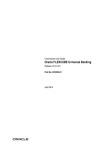

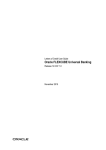
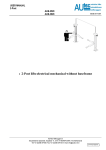

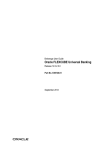



![[December] [2011] Oracle Part Number E51535-01](http://vs1.manualzilla.com/store/data/005639894_1-7cab28abe75641f653b0af59966ce958-150x150.png)


